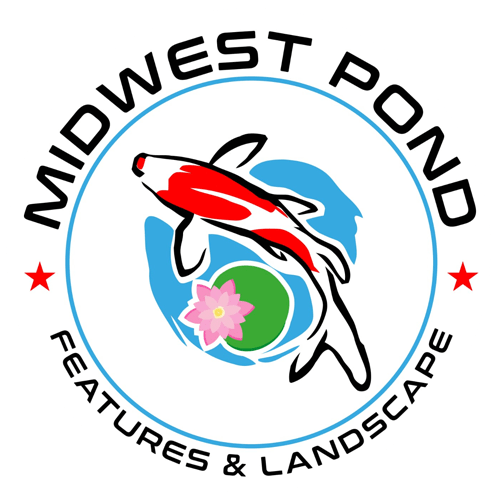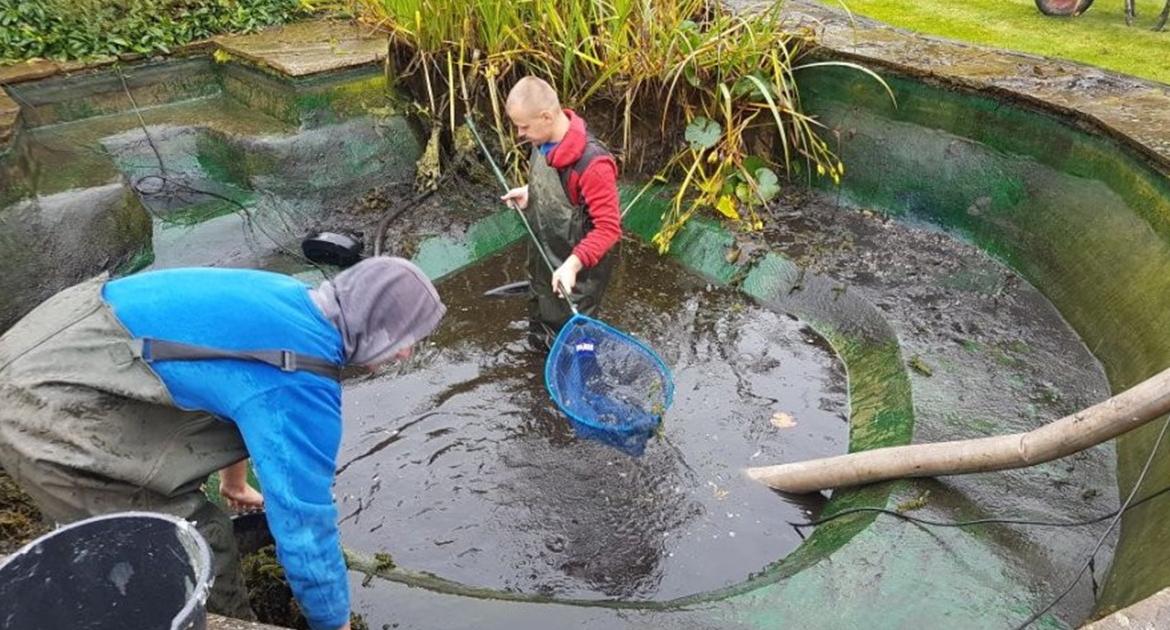(Podcast Episode)
7 Helpful Koi Pond Cleaning & Maintenance Tips
Are you the proud owner of a beautiful koi pond and want to know Helpful Koi Pond Cleaning & Maintenance Tips? Imagine vibrant koi fish gracefully swimming in crystal-clear water, creating a serene oasis in your backyard. But how do you achieve and maintain such beauty? Well, we have the ultimate solution for you! Discover 7 Helpful Koi Pond Cleaning & Maintenance Tips to keep your pond thriving and your fish happy.
This blog delves into the vital topic of koi pond cleaning and maintenance. Trust us; it’s not just about aesthetics; it’s about the health and well-being of your beloved koi and the overall longevity of your pond. Discover the secrets to maintaining a clean and well-maintained koi pond and unlock a world of benefits that will leave you and your aquatic companions joyfully swimming. Let’s dive right in!
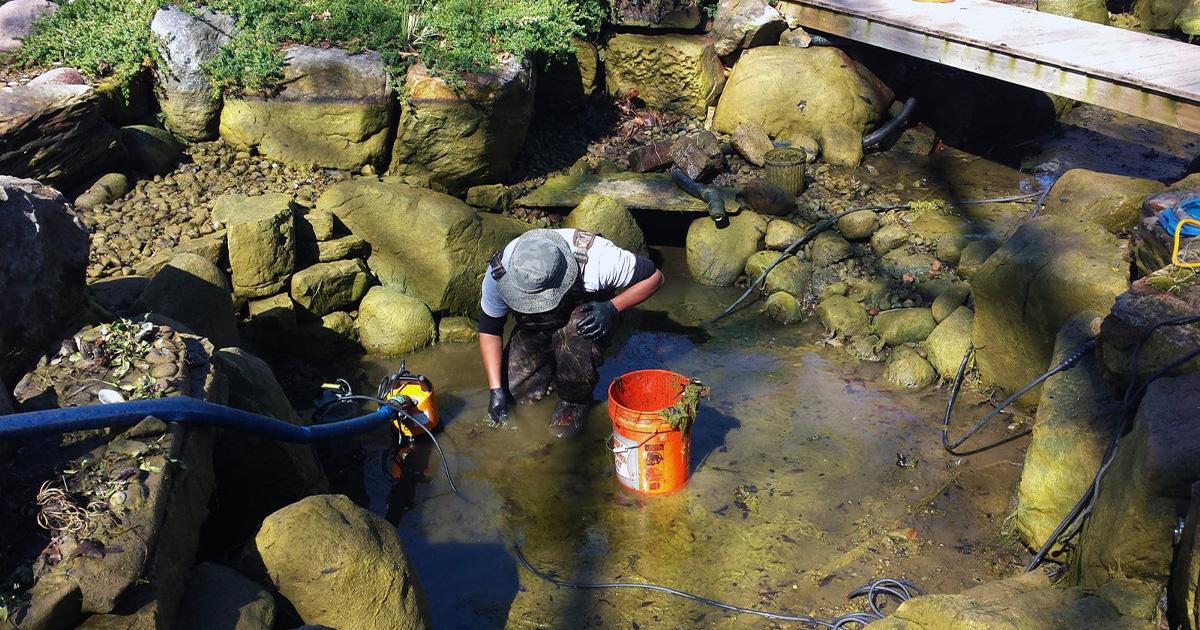
What are 7 Helpful Koi Pond Cleaning & Maintenance Tips
Tip 1: Regular Water Testing and Quality Maintenance
Significance of Regular Water Testing
- Ensure a healthy and balanced environment for koi
- Monitor pH levels, ammonia, and nitrite levels
- Detect and address water parameter abnormalities promptly
Ideal Water Parameters for Koi Ponds
- Maintain pH levels between 7.0 and 8.5
- Optimal water temperature: 59°F to 77°F (15°C to 25°C)
- Aim for dissolved oxygen levels of 6-8 mg/L
Tips for Maintaining Water Quality
- Perform regular water tests using reliable testing kits
- Adjust pH levels using appropriate chemicals or additives
- Maintain proper filtration and clean or replace filter media
- Feed koi the right amount and remove uneaten food
- Use a de-chlorinator for tap water to neutralize harmful chemicals
Maintaining water quality through regular testing and necessary adjustments is vital for creating a healthy and thriving environment for your koi.
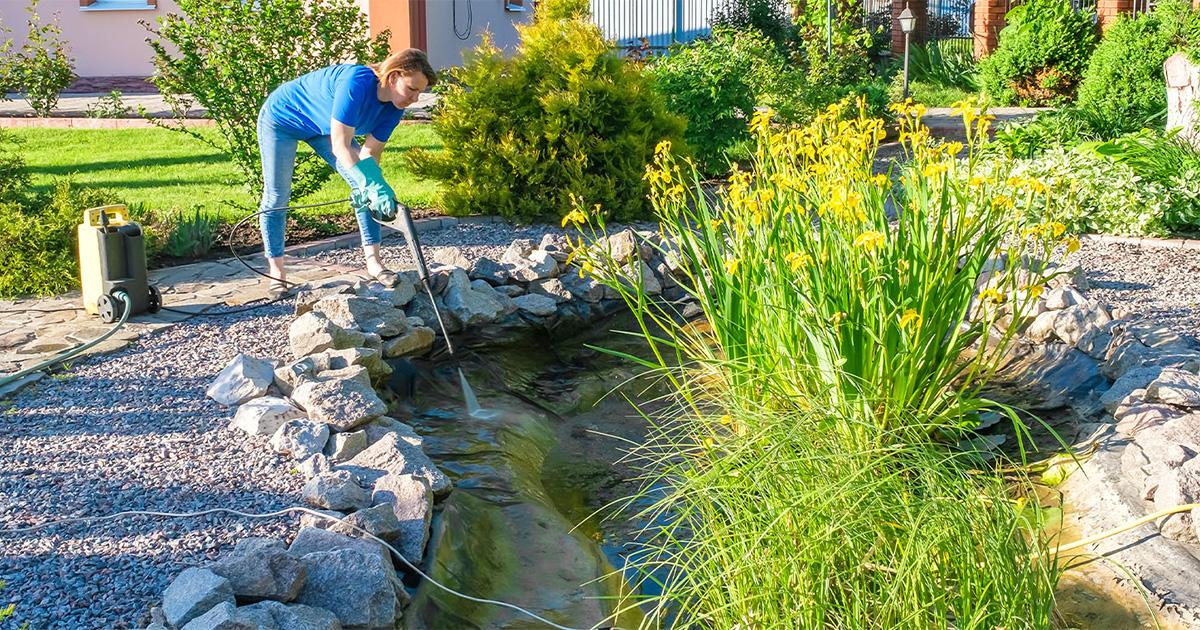
Tip 2: Skimming and Removing Debris
Importance of Removing Debris from the Pond’s Surface
- Preserve water quality by preventing organic matter decomposition
- Promote optimal oxygen exchange for fish health
- Maintain a clean and aesthetically pleasing pond environment
Methods of Skimming and Debris Removal
- Manual skimming using nets or skimmers
- Utilize surface skimmers to remove debris automatically
- Employ pond nets to skim smaller debris, such as algae
Use of Pond Skimmers and Nets for Effective Cleaning
- Pond skimmers trap debris in a collection basket for easy removal
- Nets with fine mesh efficiently capture small debris
- Pond skimmers and nets ensure thorough cleaning and debris removal
Regularly skimming and removing debris from the pond’s surface improves water quality and enhances the overall beauty of your koi pond. Using specialized tools like pond skimmers and nets simplifies and enhances cleaning.
Tip 3: Vacuuming the Pond Bottom
Remove Accumulated Debris and Waste from the Pond Bottom
- Prevent the build-up of organic matter and sludge
- Maintain water clarity and quality
- Reduce the risk of disease and harmful bacteria
Different Types of Pond Vacuums Available
Manual Pond Vacuums: Operated by hand, these vacuums use suction to remove debris and waste from the pond bottom. They are suitable for smaller ponds and provide control over the cleaning process.
Automatic Pond Vacuums: These vacuums work independently to remove debris from the pond’s bottom. They typically use a combination of suction and water jets to clean efficiently. Automatic vacuums are ideal for larger ponds with heavy debris accumulation.
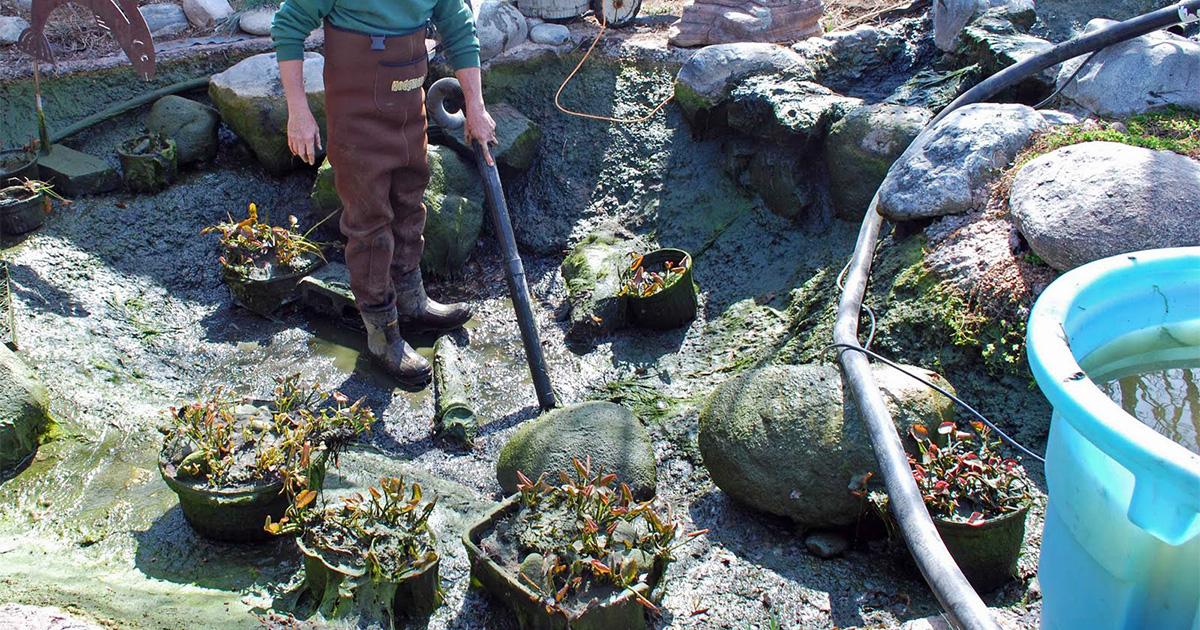
Step-by-Step Instructions on Vacuuming the Pond Bottom
Prepare the Pond: Remove large debris using a net or skimmer. Disconnect electrical devices and turn off pumps.
Set Up the Vacuum: Attach the appropriate nozzle or head to the vacuum and connect it to a suitable power source or water outlet.
Position the Vacuum: Submerge the vacuum into the pond, ensuring the nozzle or head is in contact with the bottom.
Start the Vacuum: Turn on the vacuum and slowly move it across the pond bottom. Work methodically to cover the entire area.
Clean the Collection Bag or Filter: Regularly check and empty the collection bag or clean the filter to maintain optimal suction and efficiency.
Monitor Water Level: Keep an eye on the water level in the pond to prevent excessive drainage during the vacuuming process.
Finish and Rinse: After vacuuming, disconnect the vacuum and rinse any debris or sediment. Reconnect electrical devices and turn on pumps.
Regular vacuuming of the pond bottom helps prevent the accumulation of debris. It maintains a clean and healthy environment for your koi. Choose the appropriate vacuum type based on your pond’s size and needs, and follow the step-by-step instructions for effective cleaning.
Tip 4: Proper Filter Maintenance
Role of Filters in Maintaining Water Quality
- Filters remove debris, excess nutrients, and harmful substances.
- Maintain optimal performance for a clean and healthy pond.
Different Types of Filters Used in Koi Ponds
- Mechanical Filters: Trap debris and particles from entering the pond.
- Biological Filters: House beneficial bacteria that break down harmful substances.
- UV Clarifiers/Sterilizers: Eliminate algae and harmful bacteria.
Guidelines for Cleaning koi pond Filters
- Regular Inspection: Check filters for clogging or damage.
- Cleaning Mechanical Filters: Rinse or backwash to remove debris.
- Maintaining Biological Filters: Rinse when necessary, but not too frequently.
- UV Clarifiers/Sterilizers: Clean the quartz sleeve and replace the UV bulb annually.
Tip 5: Algae Control and Prevention
Causes of Algae Growth in Koi Ponds
- Excess sunlight, poor water circulation, and organic matter accumulation.
Methods for Algae Control and Prevention
- Limit Sunlight Exposure: Install shade structures or use aquatic plants.
- Balance Nutrient Levels: Avoid overfeeding and remove excess debris.
- Enhance Water Circulation and Aeration: Use pumps and aerators.
- Use Algaecides or Biological Treatments: Follow instructions for application.
Tip 6: Regular Fish Health Checkups
Importance of Monitoring Fish Health
- Early detection allows for prompt treatment and prevention.
- Promote overall well-being and longevity.
Signs of Common Fish Diseases and Infections
- Abnormal behavior, visible signs, and respiratory distress.
Guidelines for Conducting Regular Fish Health Checkups
- Visual Inspection: Look for abnormalities and wounds.
- Water Quality Assessment: Test parameters regularly.
- Quarantine New Fish: Monitor in a separate tank.
- Seek Professional Advice: Consult a veterinarian or specialist.
Tip 7: Seasonal Maintenance and Winterizing
Maintenance Tasks for Each Season
- Spring: Clean debris, check equipment, and start feeding fish gradually.
- Summer: Monitor temperature, control algae, and maintain filters.
- Fall: Remove leaves, trim plants, and adjust feeding.
- Winter: Reduce feeding, protect from freezing, and ensure insulation.
Process of Winterizing a Koi Pond
- Clean the pond, install the net, and use a floating de-icer or aerator.
Tips for Protecting Koi During Winter
- Stop feeding below 50°F (10°C), provide shelter, and monitor water quality.
By following these tips, you can maintain a clean and healthy koi pond throughout the year.
FAQs for 7 Helpful Koi Pond Cleaning & Maintenance Tips
How often should I clean my koi pond?
Koi ponds should be cleaned regularly to maintain the water and your fish’s health. Generally, thorough cleaning of a koi pond is recommended at least once a year, preferably in the spring. However, regular maintenance tasks such as skimming debris, checking filters, and monitoring water quality should be performed more frequently, ideally weekly or bi-weekly.
Are there professional koi pond cleaning services near me?
Professional koi pond cleaning services are available at Midwest Pond Features and Landscape. We are a reliable option if you’re looking for such services. We offer professional koi pond cleaning and maintenance services, ensuring your pond remains in optimal condition. Consider reaching out to us for assistance with your koi pond cleaning needs.
Final Words About 7 Helpful Koi Pond Cleaning & Maintenance Tips
Maintaining a clean and healthy koi pond is essential for the well-being of your fish and the overall aesthetics of your outdoor space. You can ensure a thriving pond ecosystem by regularly testing water quality, skimming debris, vacuuming the pond bottom, maintaining filters, controlling algae, conducting fish health checkups, and performing seasonal maintenance.
Consistent cleaning and maintenance are the keys to a successful koi pond. Implement these tips and seek professional assistance from Midwest Pond Features and Landscape for optimal results. Enjoy the beauty of a well-maintained koi pond for years to come.
